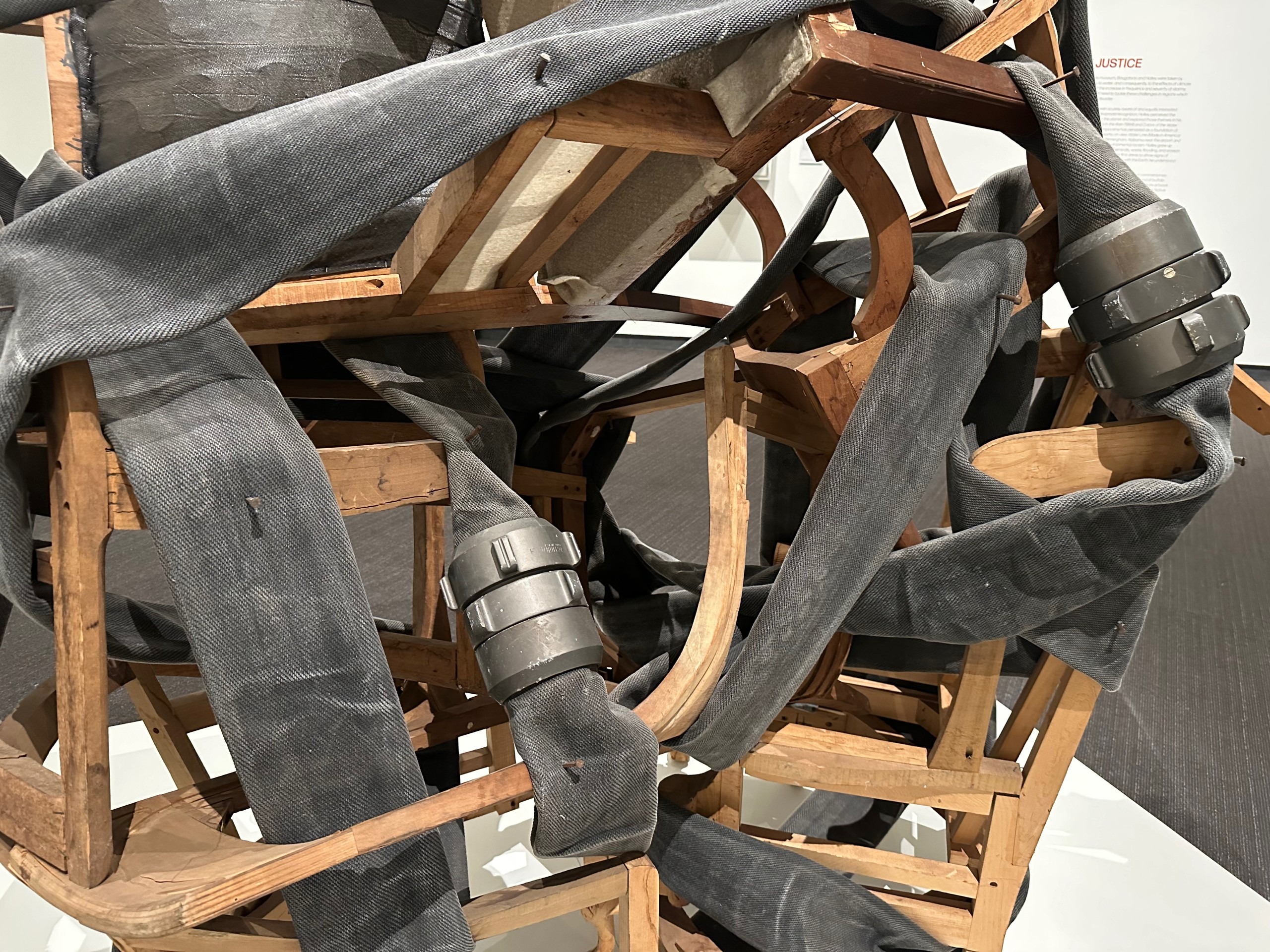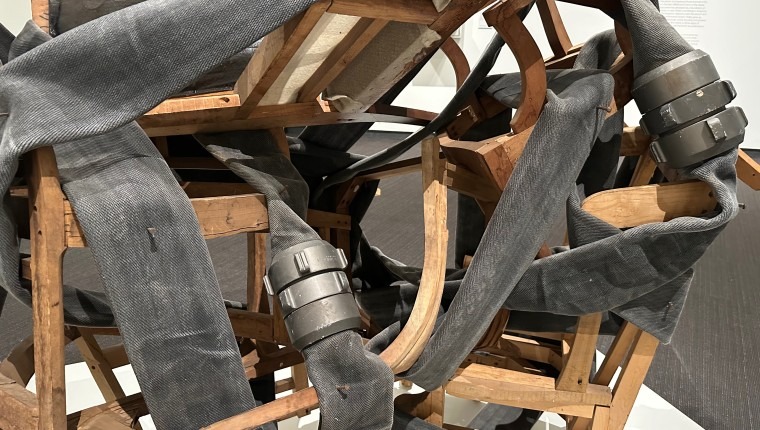Through September 15
Museum of Fine Arts, St Pete
Details here
Never the Same Song is a contemporary iteration of the idea the Greek philosopher Heraclitus proposed that no person ever steps in the same river twice.
It may also be its philosophical palindrome.
In one direction is a person entering this changing flowing reality – and going the other way is that reality expressed by the person. And the person themself is ever evolving and never the same.
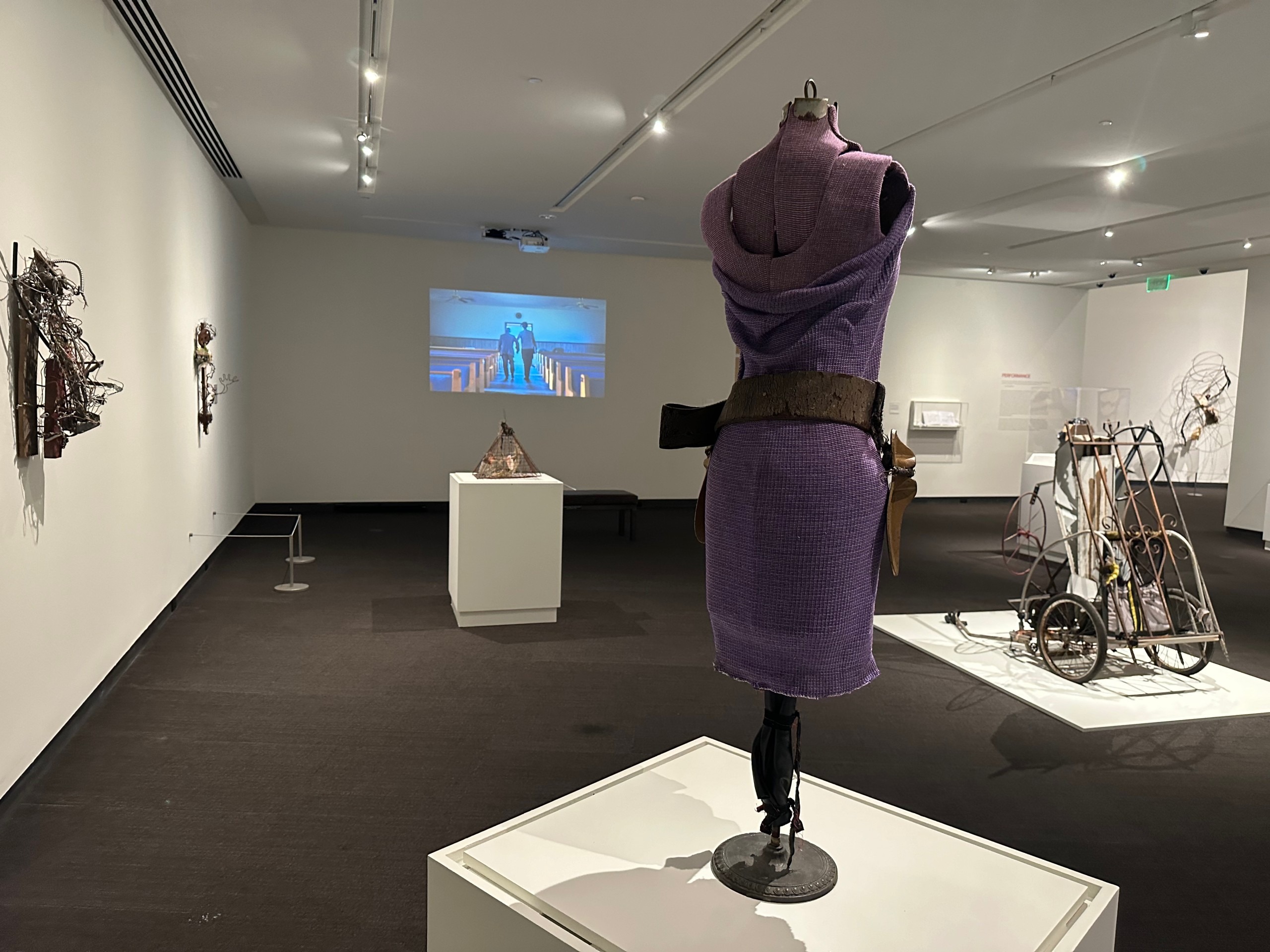
This exhibition is a two person show with artists Lizzi Bougatsos and Lonnie Holley curated by independent curator Viva Vadim and the MFA’s Senior Curator of Contemporary Art, Katherine Pill.
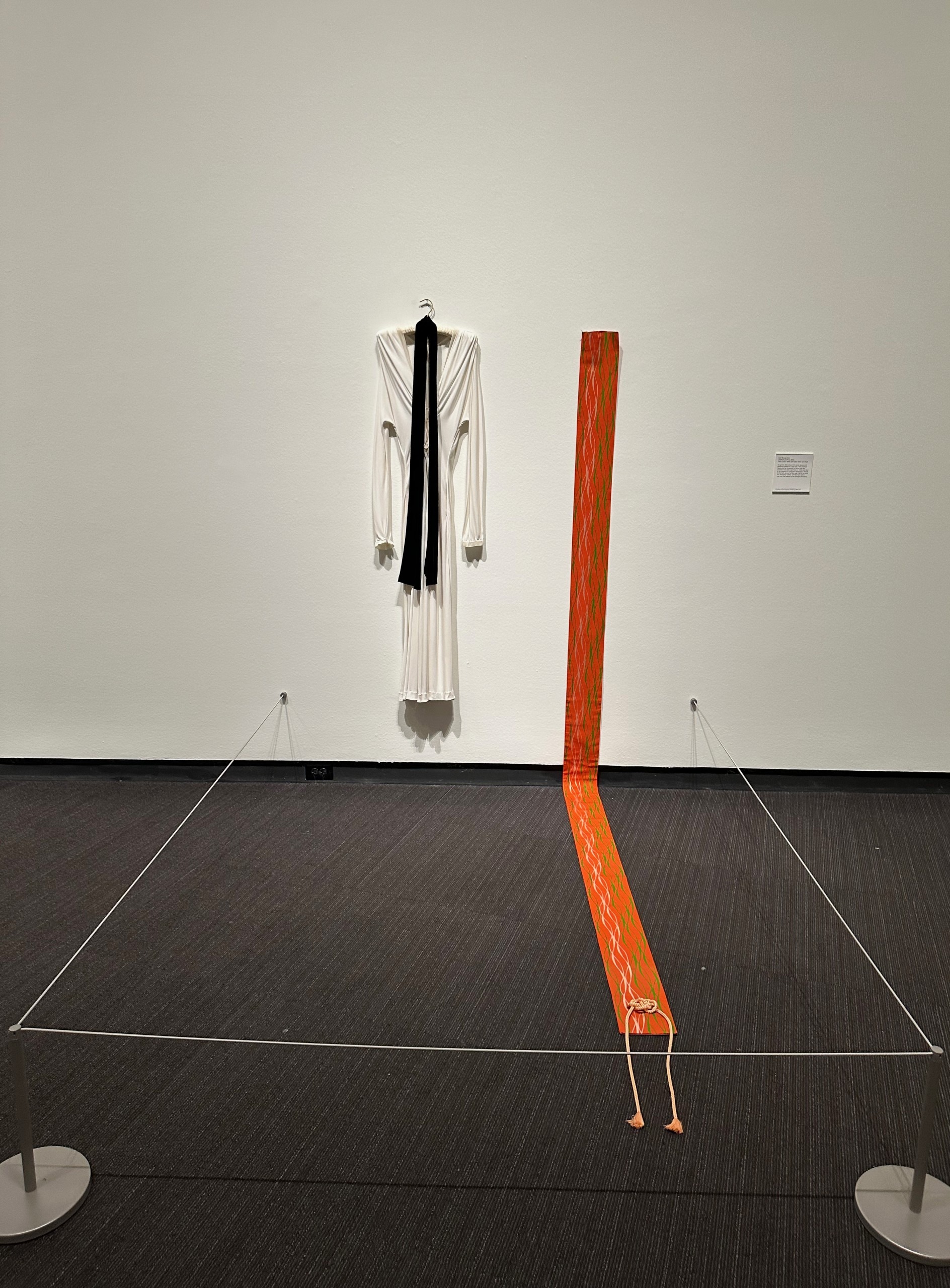
The works are primarily assemblage-style sculptures from found objects and personal artifacts – materials they have collected over the years. The artists weave in their personal stories in the context of the larger world they’re living in, demonstrating as artists the philosopher stone’s transmutation of base materials.

The 47 or so pieces are loosely grouped into three categories.
Family Histories
Climate Justice
Performance
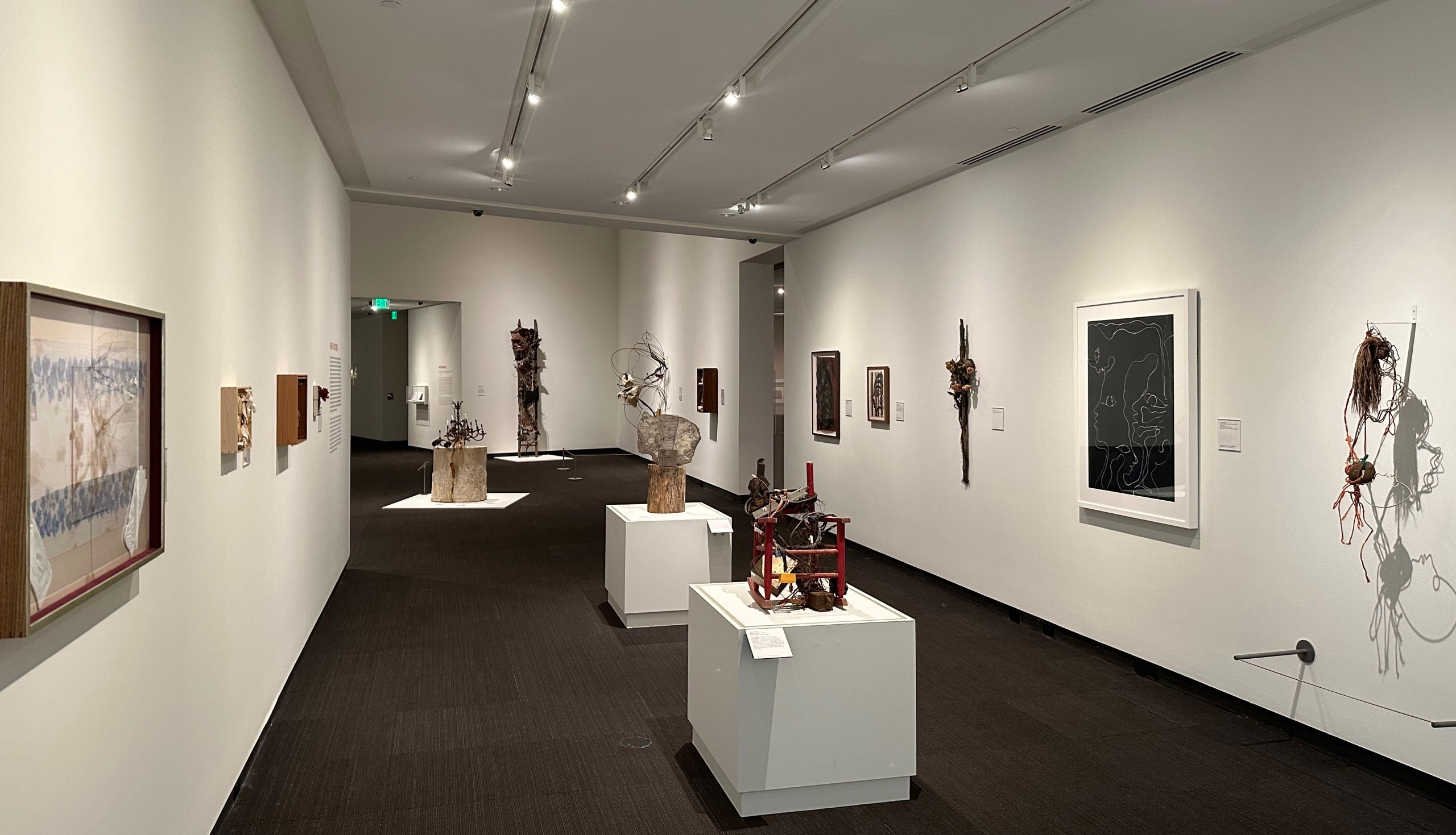
In the first gallery is Family Histories, personal and intimate pieces, the grounding from which the other works spring.
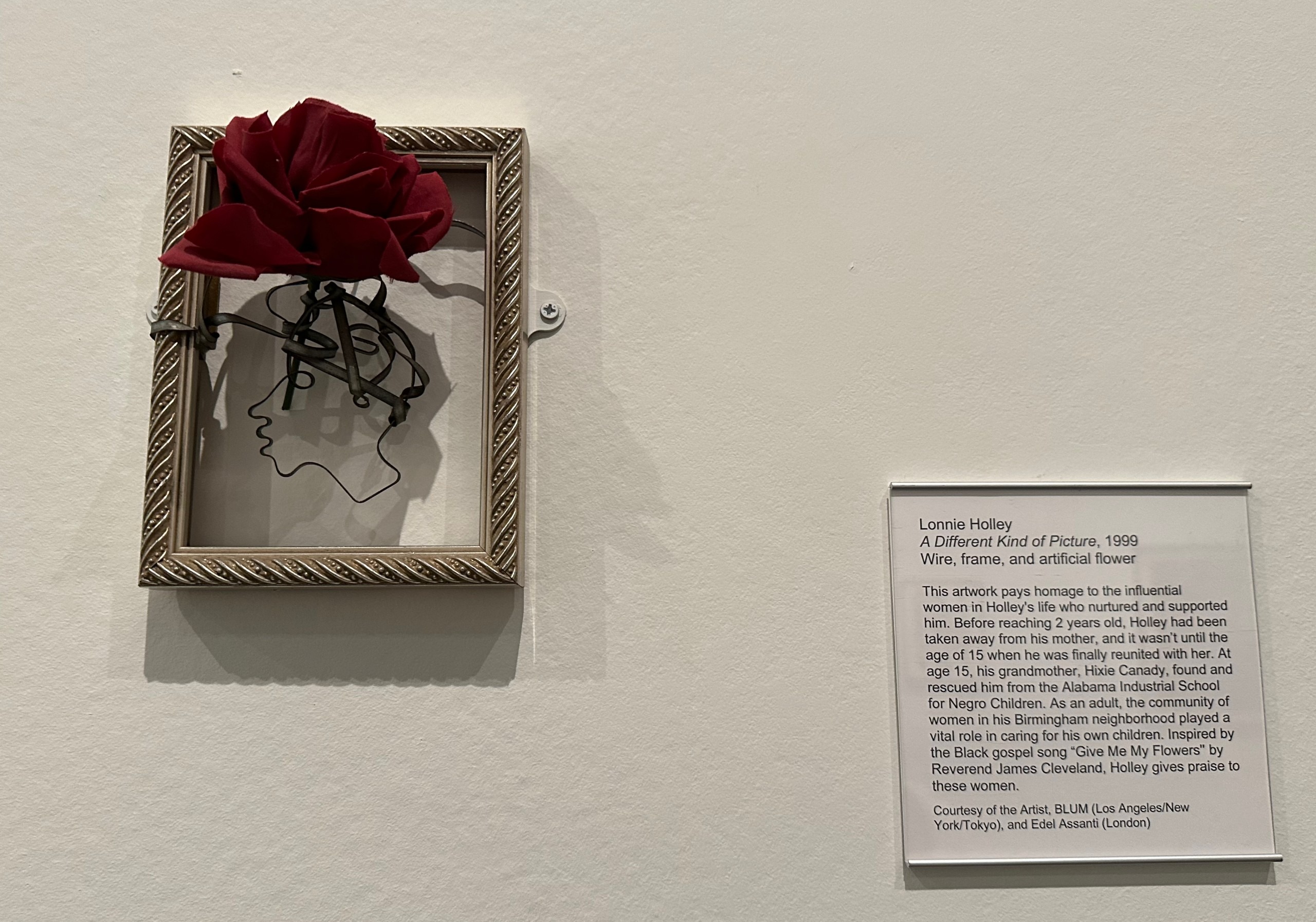
Here is Holley’s 1999 piece titled A Different Kind of Picture. Inside a small silver frame is a wire outline of a person’s head in profile with a red rose hovering out beyond the frame.
The exhibition label explains that this piece, inspired by the Black gospel song “Give Me My Flowers,” pays homage to the influential women in his life.
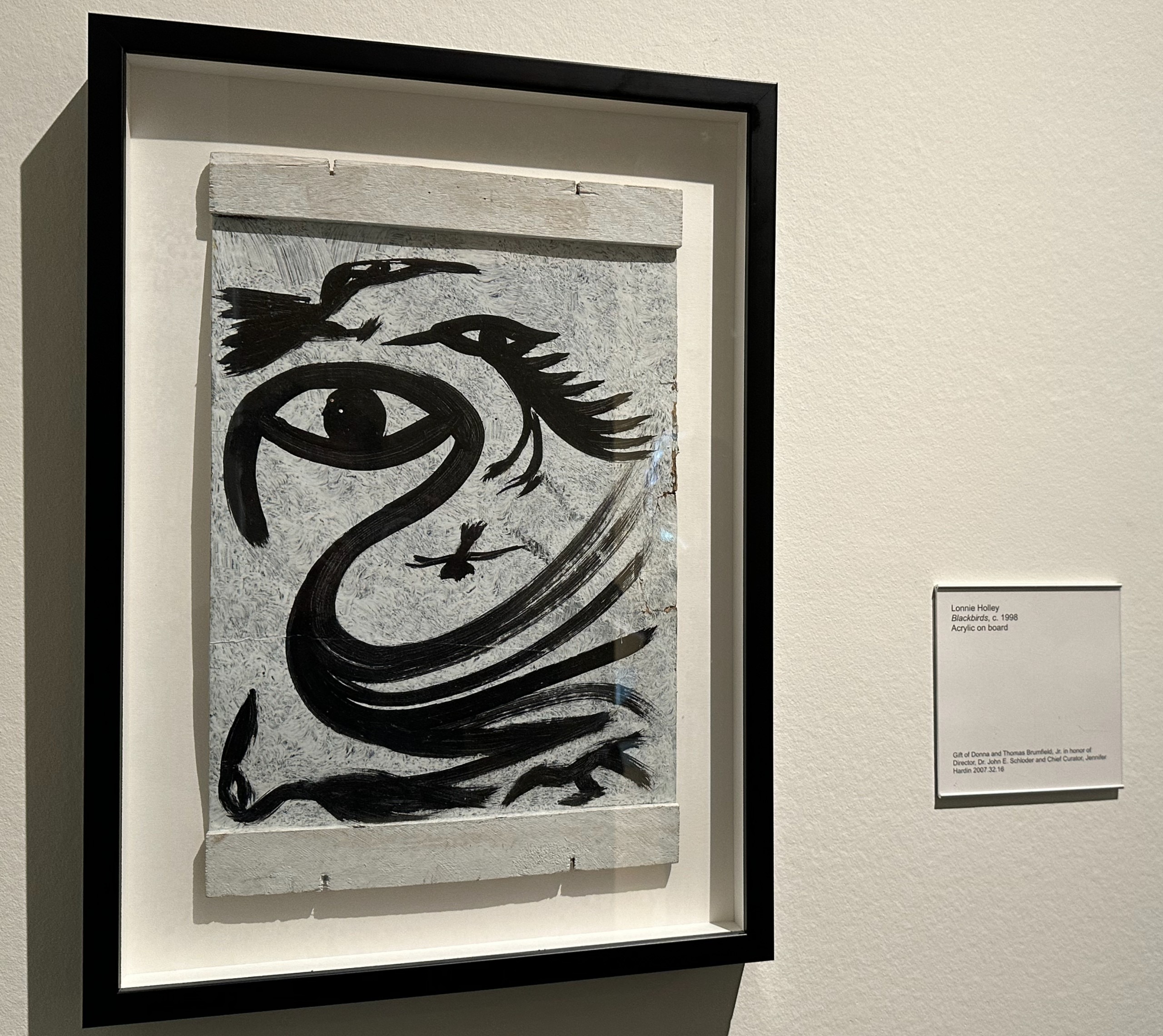
Holley was taken away from his mother before he was even 2 years old – and it wasn’t until age 15 when his grandmother found and rescued him from the Alabama Industrial School for Negro Children that he was reunited with his mother. And when Holley had children of his own, the women in his Birmingham community helped care for them.
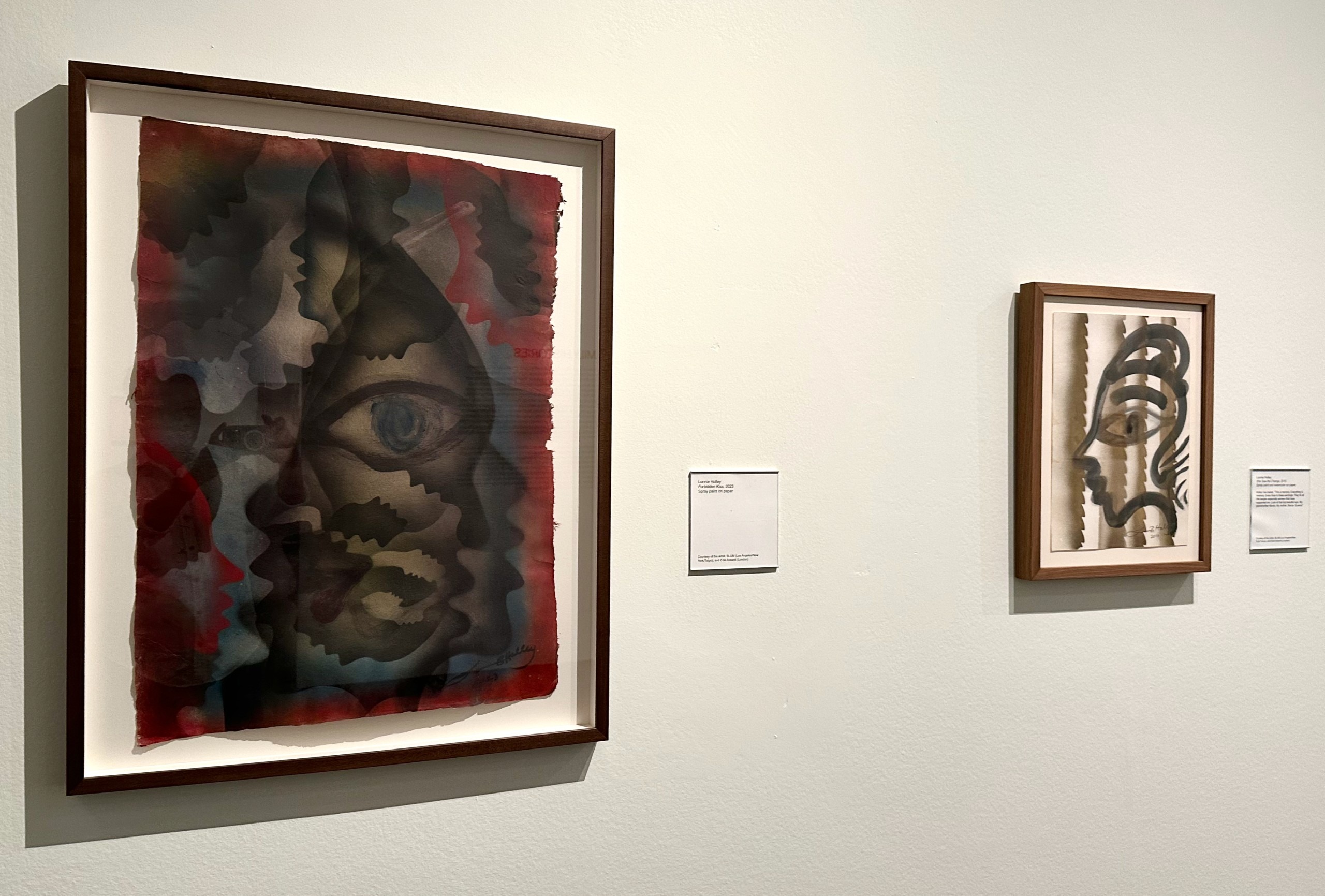
In the press preview tour, Holley wonders – Are we considering what is in this flowing water, where does it flow to? I don’t have to cry about something, even giving her flowers while she yet lives, or do I wait until she’s dead and gone, and put a flower in a frame and put a silhouette of her in there…
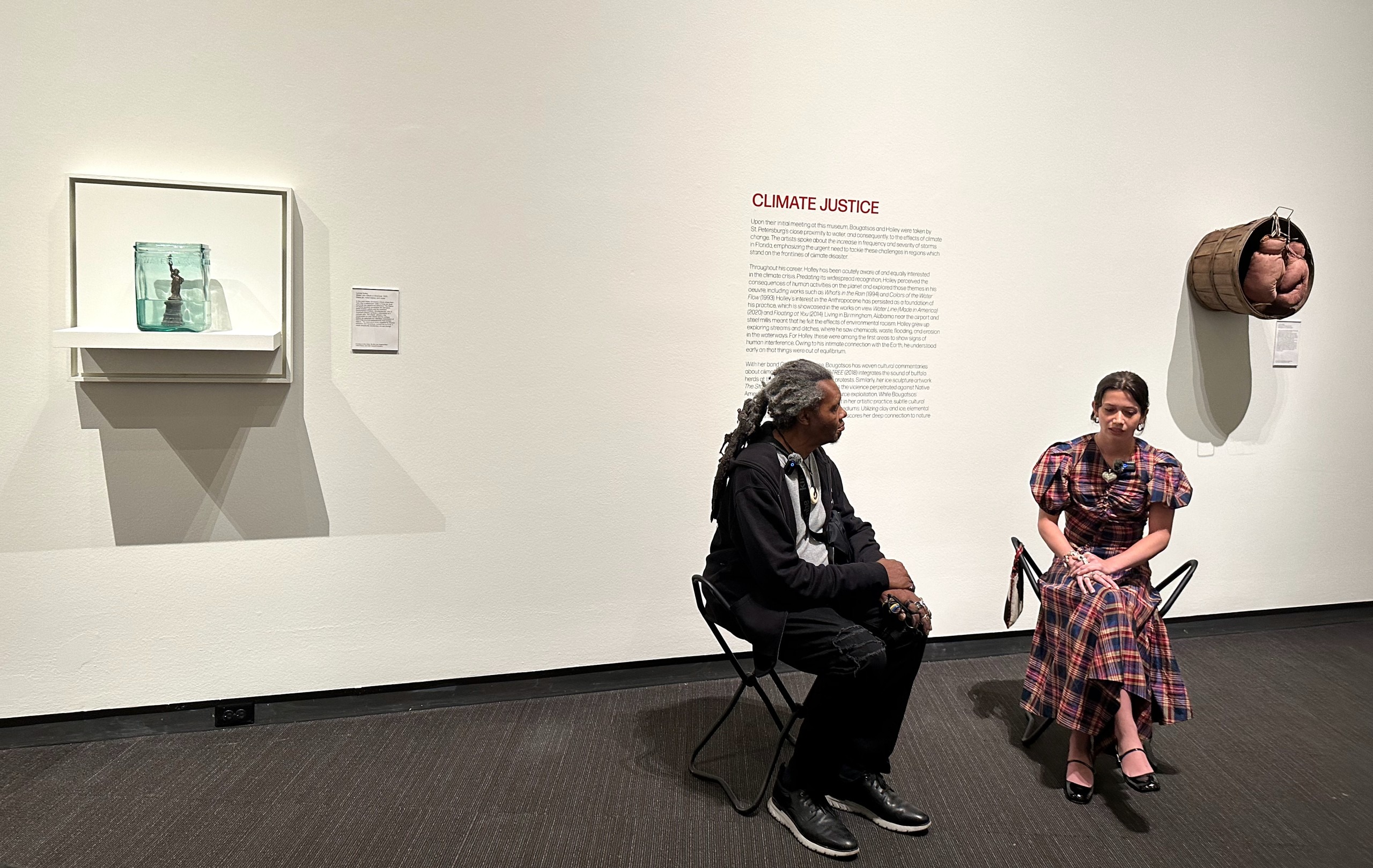
Along the same wall hang several of Lizzi Bougatsos’s shadow box assemblages, collaged from personal artifacts and heirlooms she has carried through her life.
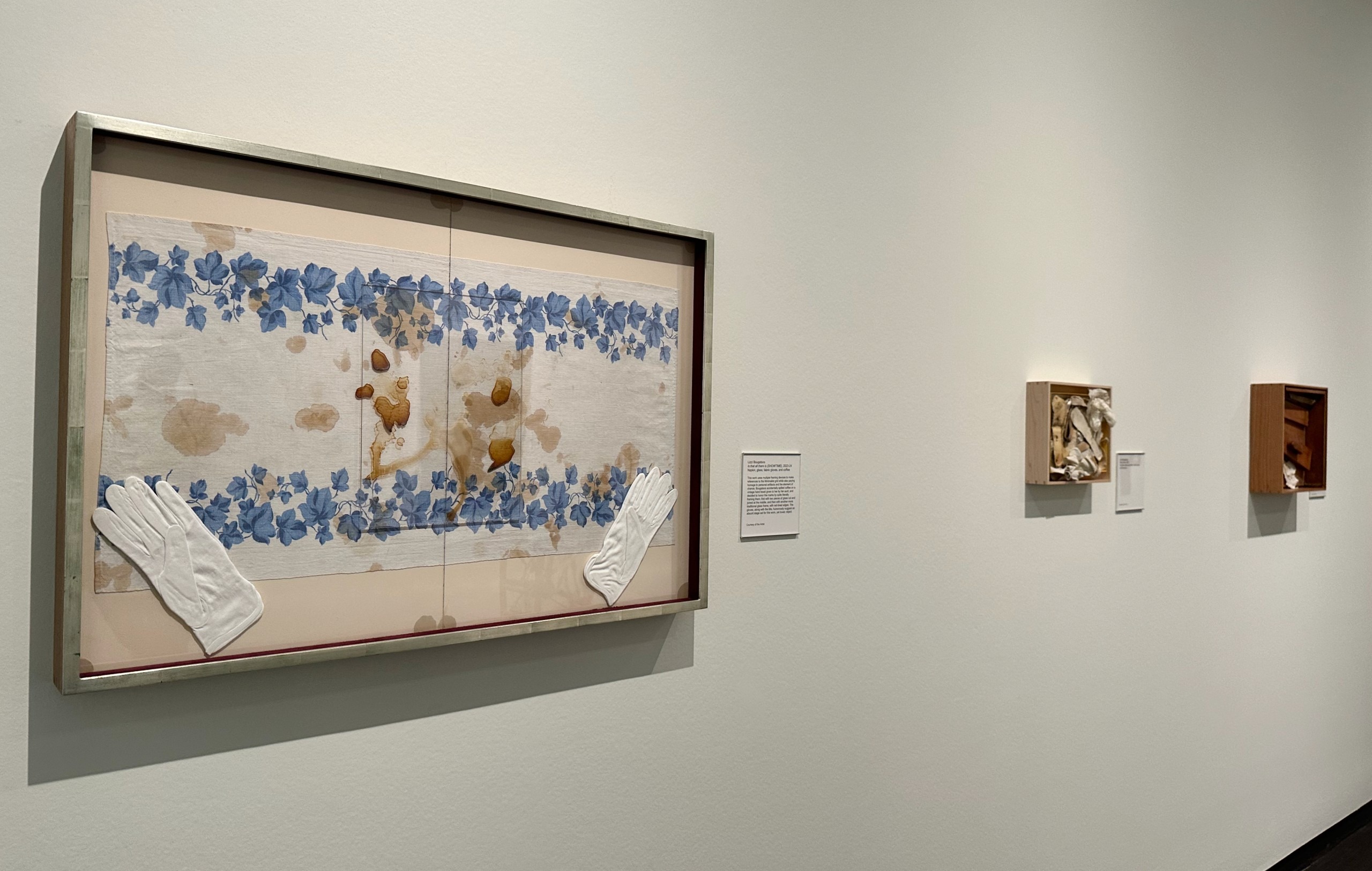
There’s a drawer that once held her art supplies, part of a furniture piece built by a member of her family, soles of her ballet shoes within a box within a frame called Shoe Souls, and a tea towel that she spilled coffee on that belonged to her aunt, one who introduced Bougatsos to ceramic.
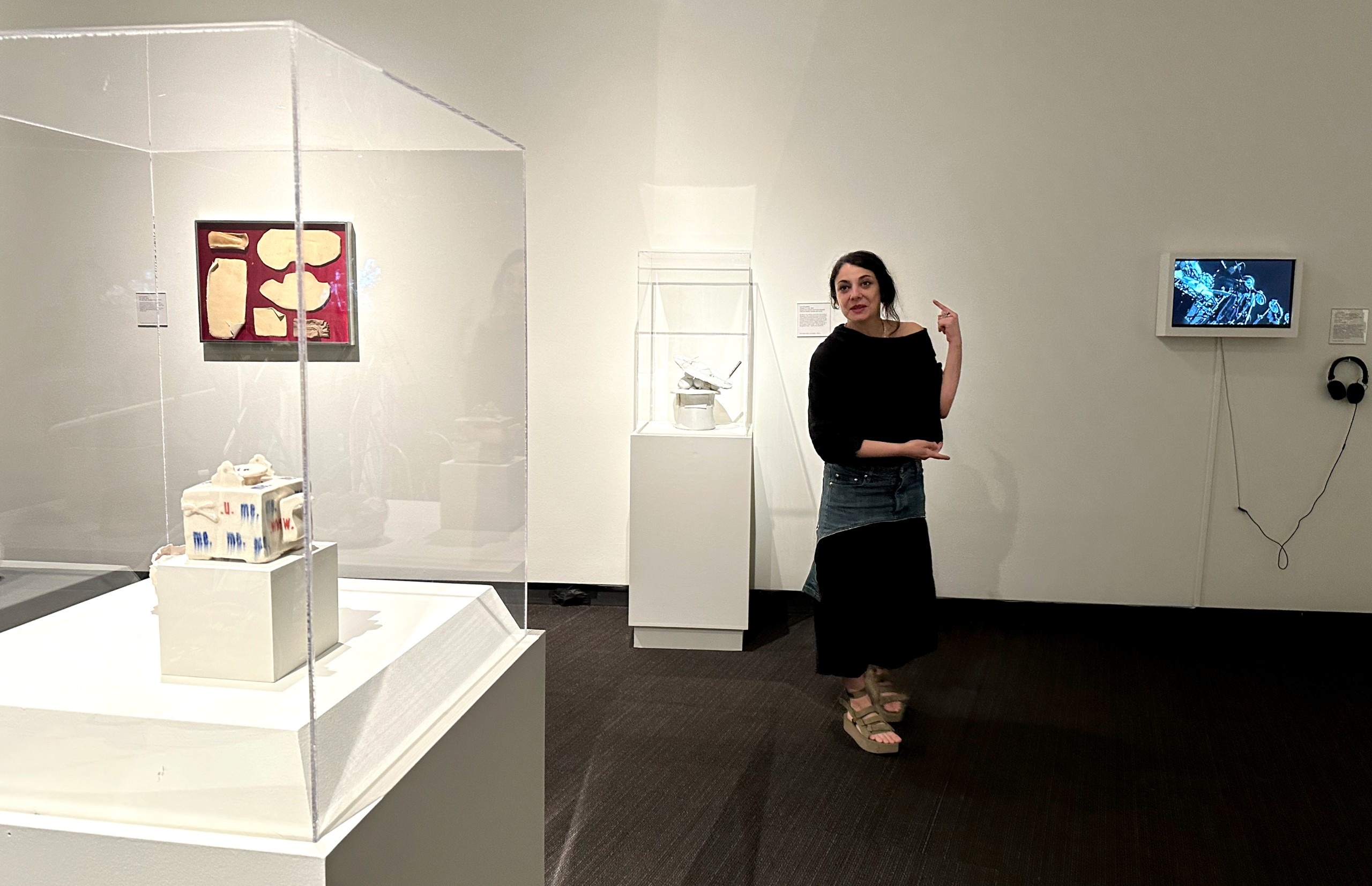
Within these personal displays are also questions about who built America, the bridges – people who came from different countries. She spoke about telling stories that people can relate to, and maybe uplift.

Two Holley sculptures line up in the middle of the floor. Balance (if Nature was the Artist) speaks to the wonders of nature, and how activities of people have impact it, which is a perfect segue into the next gallery – Climate Justice.
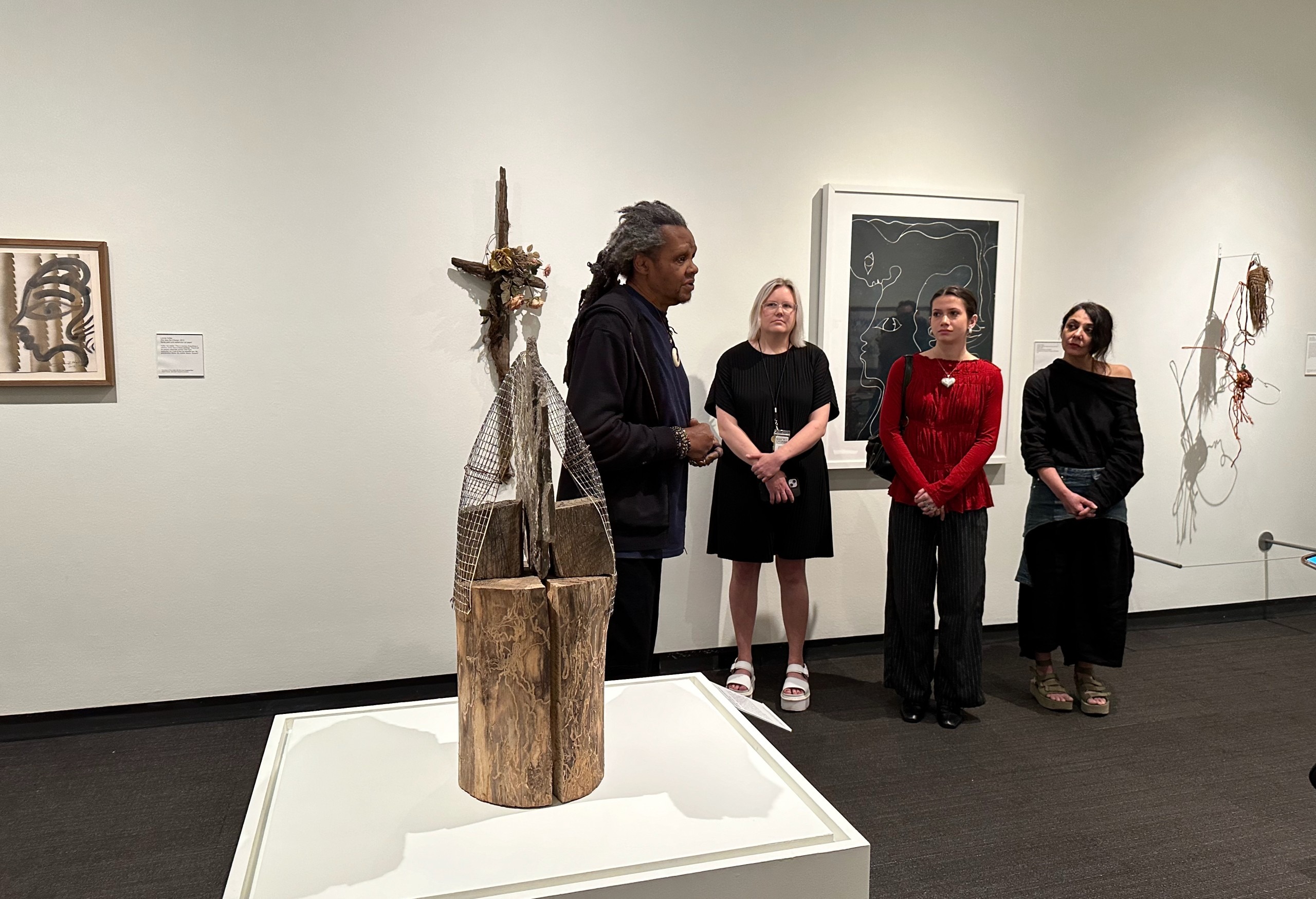
Looking around this spacious gallery, it is an assemblage of ideas and realizations, as each of the pieces within it are assemblages of memories, encounters and origins.

There’s a chandelier tilted on an architectural plinth with ballet shoes dangling over one side.
On the wall behind are looping razor wires with stuff caught in its cutting points.

Next to it on the right is a container with a fire hose coiled up around a drinking fountain.
Leaning against an adjacent wall to the left is a ladder with a flood of flotsam and jetsam clogging the rungs.
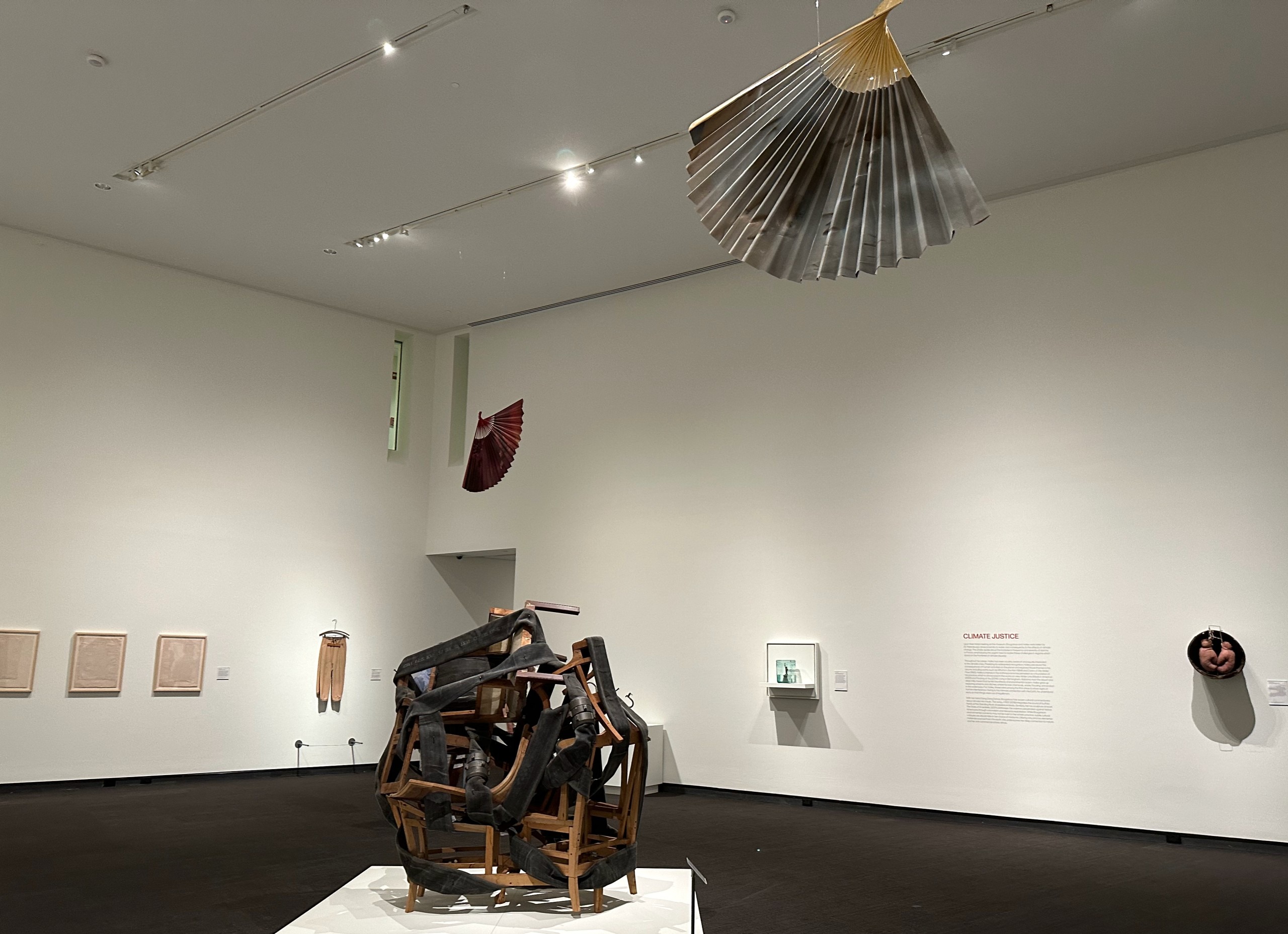
There’s another firehose, anaconda-like, wrapping around furniture frames in the middle of the floor.
Two suspended fans animating the above space.
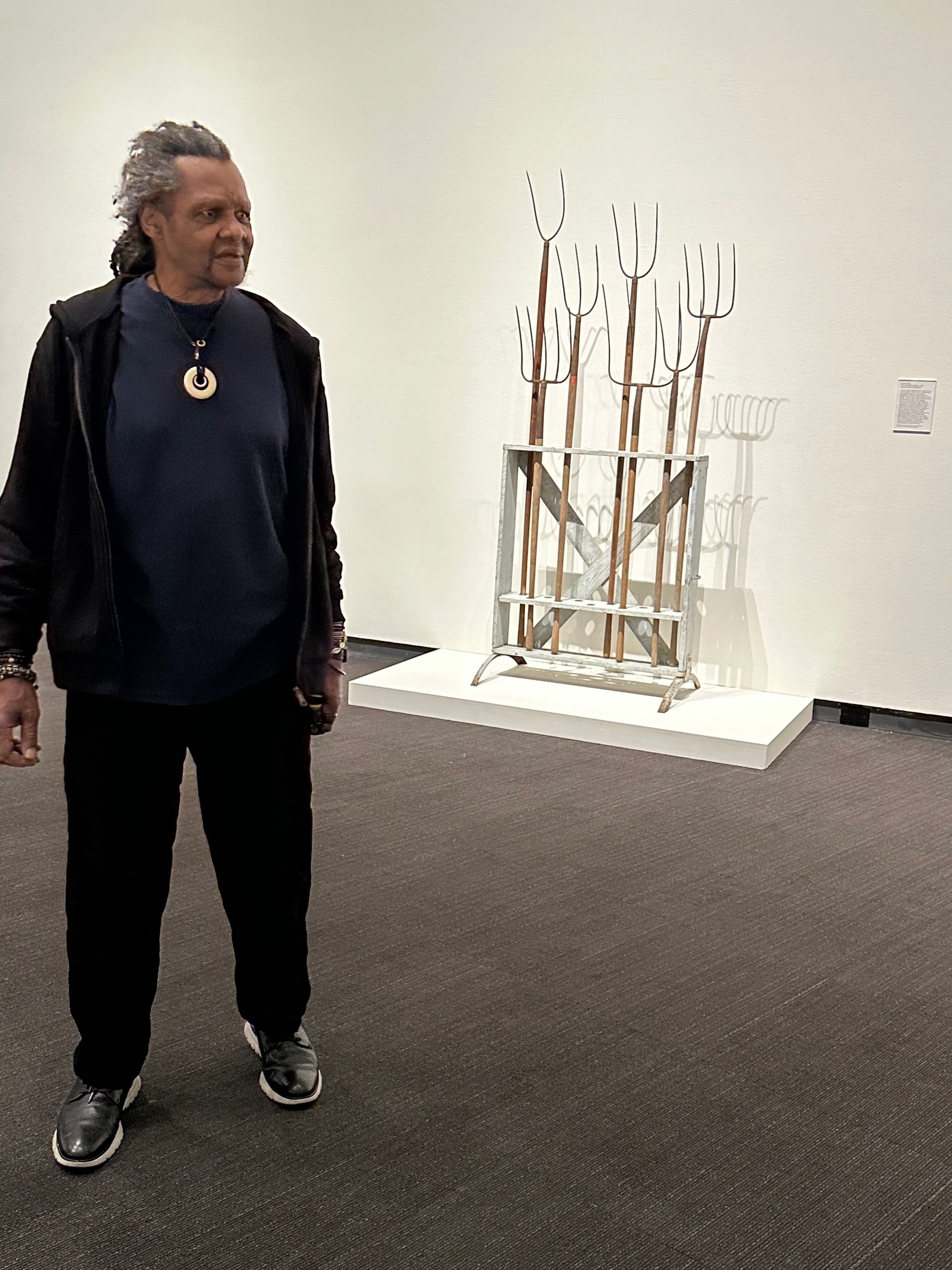
Pitchforks on a rack casting distorted shadows.
Several clothing items hang down from the wall.
A wooden door with a galleon ship sailing at its base.
Three cotton on paper compositions, all Robert Ryman-like.
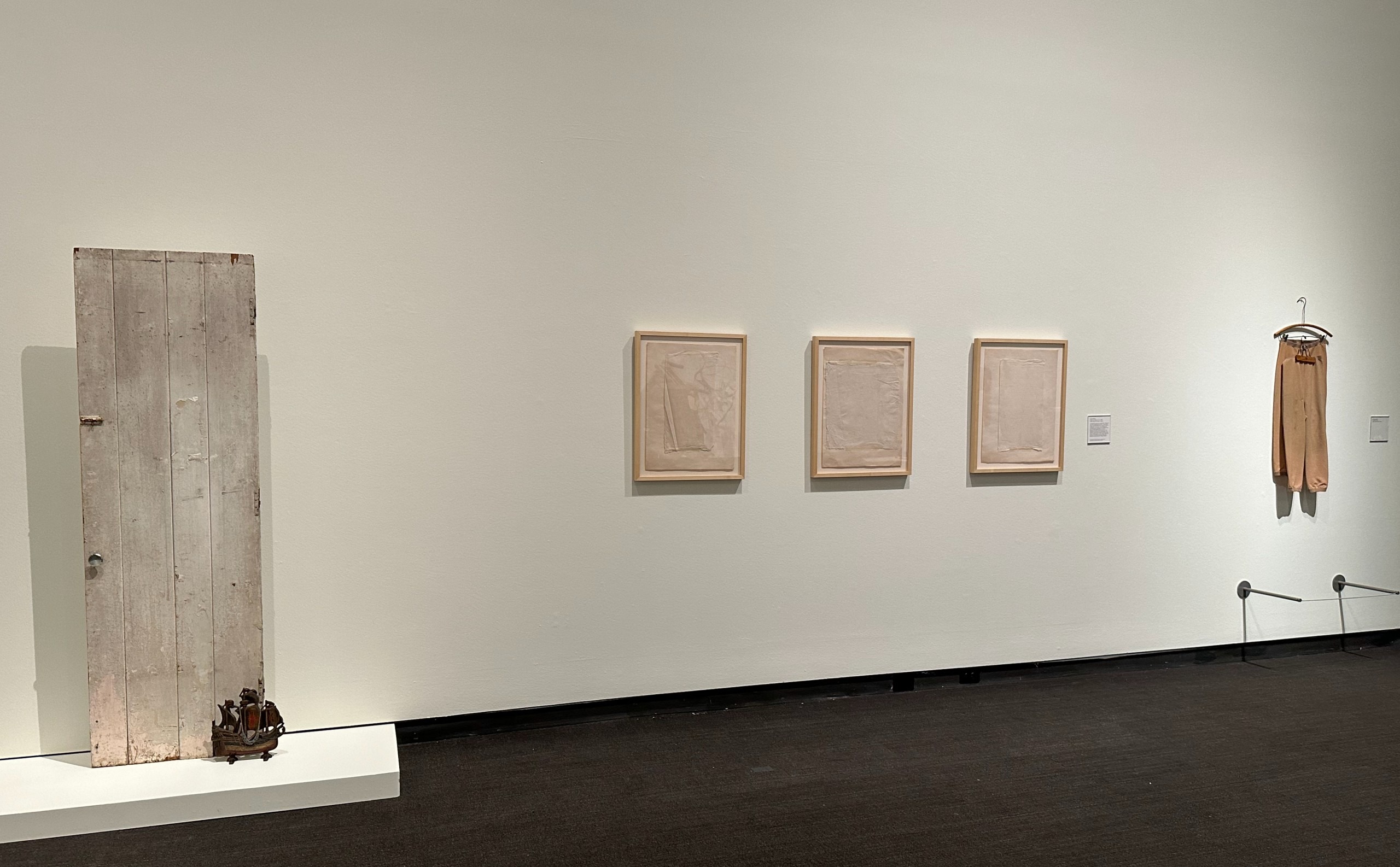
A set of boxing gloves inside a bushel basket.
The Statue of Liberty inside an antique battery glass jar half-filled with water.
Couple of watering cans with spouts turning back on themselves.
A bottle rack à la Marcel Duchamp but with shoes.
Each work presents a familiarity, jogging some memory – each comprised of objects we may have used, owned or thrown away at some point.
They now require deep reconsideration seeing them in their new configuration, placement and context. This Climate Justice grouping could have equally been titled Racial and Social Justice.
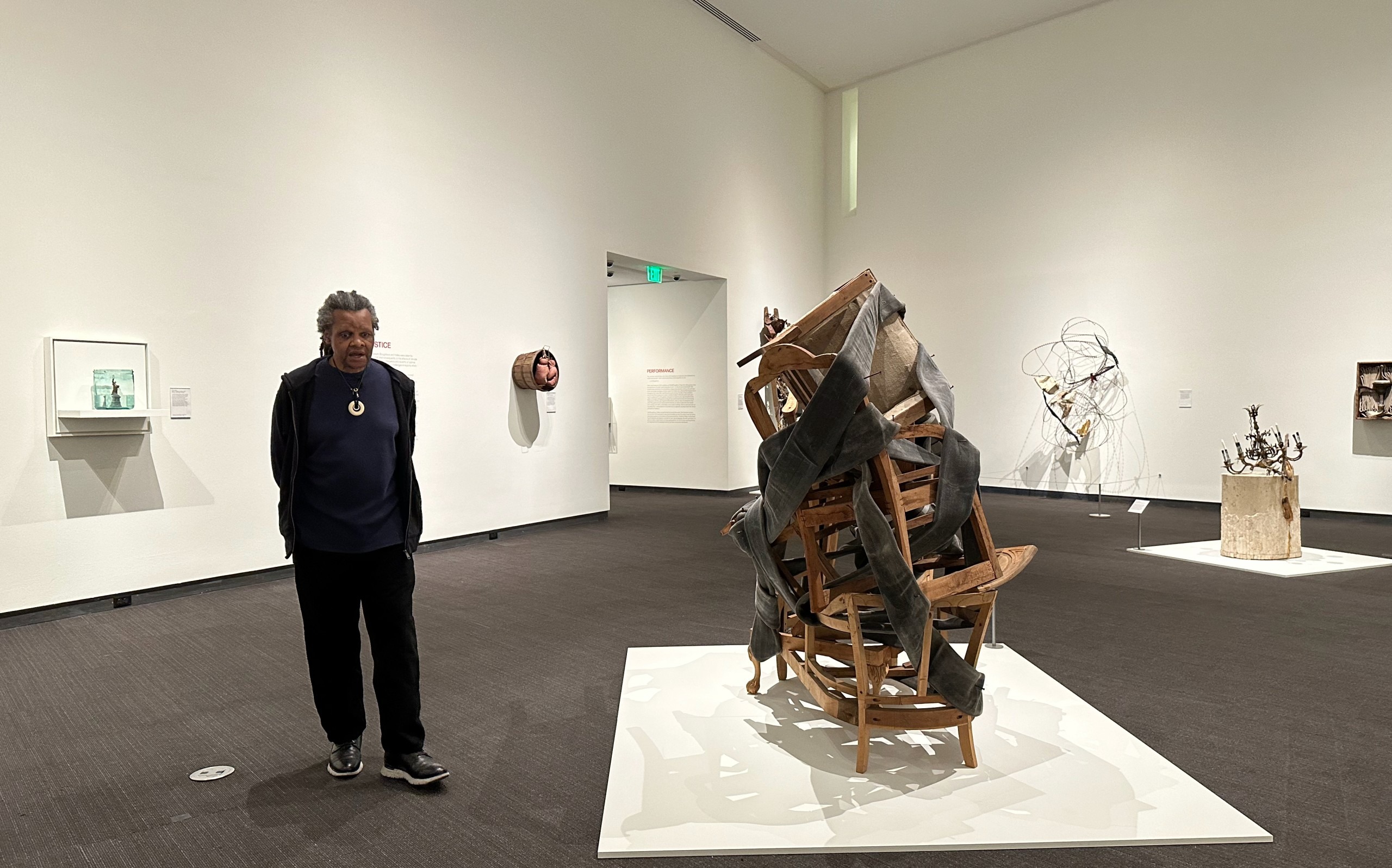
During the preview tour, Holley walked around the center piece Without Skin, the tangled firehose nailed to un-upholstered furniture stacked and joined together, and spoke of a time quite recent when whites-only water fountains existed, of police using fire hoses to drive back Civil Rights protesters… and the everlasting issue of safe clean water and a fight for access and protection is ongoing in places like Flint, Michigan and Standing Rock in the Dakotas.

Both artists’ art practice also involve performance, as documented in the third gallery.
I had the opportunity to attend a performance Holley gave in September last year at the Bob Rauschenberg Gallery in Fort Myers. It was singularly unique and mountain-moving, with him on electric keyboard singing out his life, this planet – while showing off a wire sculpture with multiple faces he started making earlier that day.

At the entrance to the gallery is a notebook where Bougatsos recorded her conversations with Holley mixed with sketches while visiting his studio in Atlanta, reflecting over ten years of friendship and collaborations.
Each week of the exhibition, the MFA will turn a page of this notebook. And in August, in collaboration with poets Keifer Calkins, Eleanor Eichenbaum and Tyler Gillespie, they will show pages from the notebook in downtown St. Petersburg’s Poetry Alley.
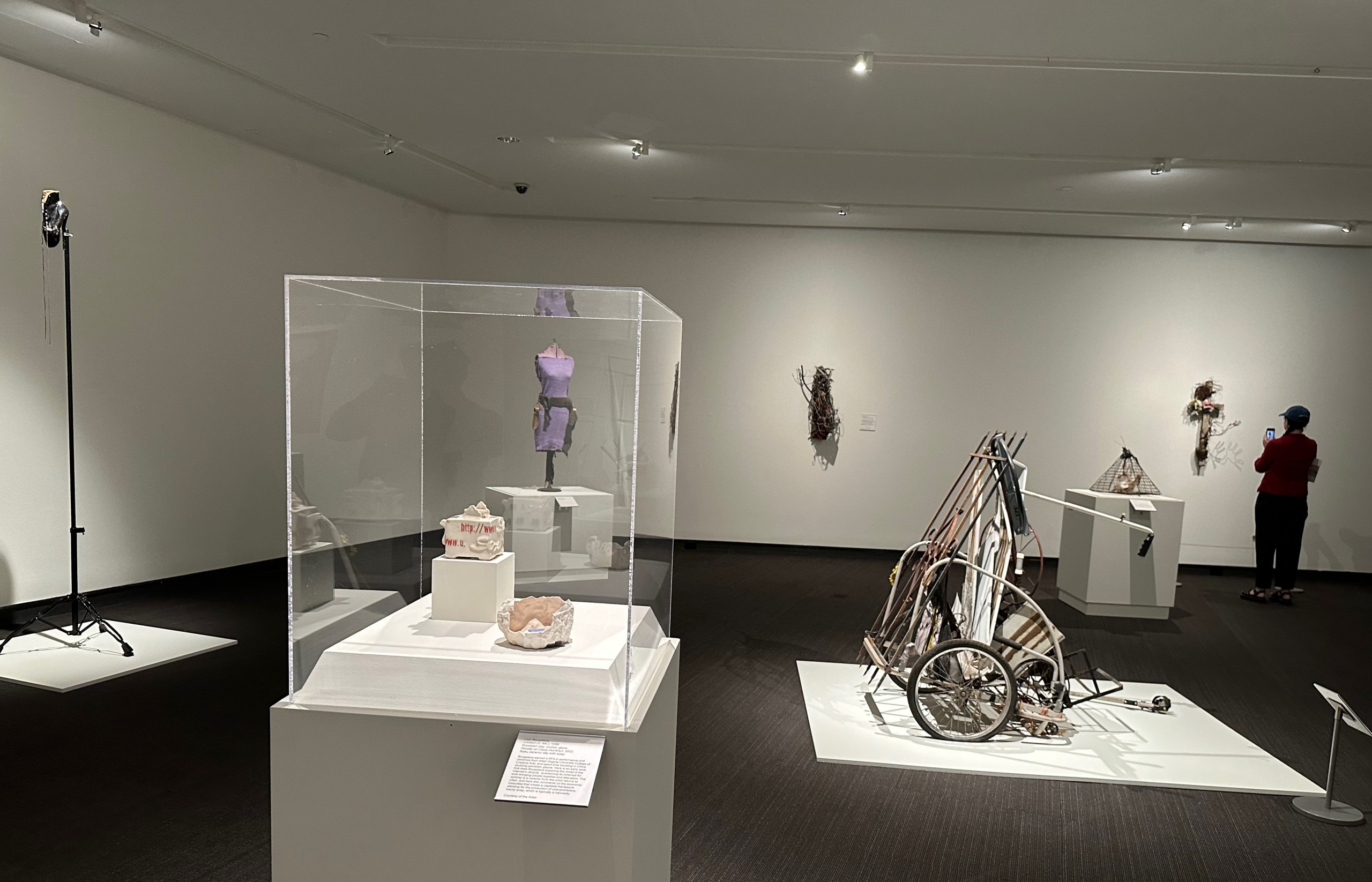
In this gallery’s randomly placed works are two videos showing performances, and props and artifacts from several of Bougatsos’s performances.
Particularly interesting are the five ceramic pieces titled Snake Bowls used to collect water from her ice sculpture performance titled The State of Amerikkka, and Holley’s The Gatherer, a tangle of metal scraps tenuously tied with rope to a cart on wheels.
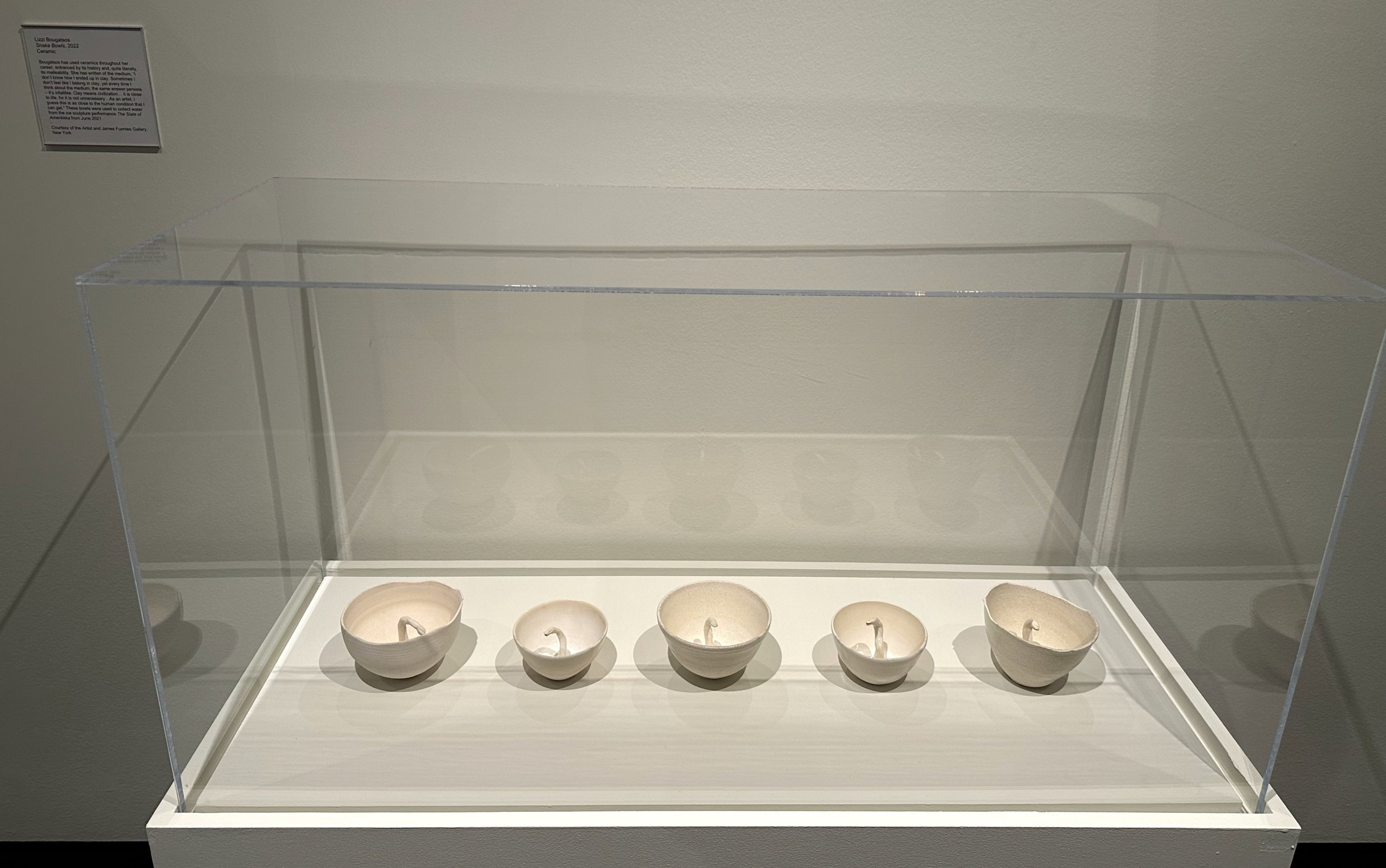
Explanation from the exhibition label – “Holley purchased this bicycle trailer from a man who was collecting scrap metal to earn money to feed his family. Holley saw his own artistic practice reflected in the man’s contraption. They both are accustomed to utilizing what they have, and what others have deemed unworthy, in an attempt to improve the lives of those around them.”
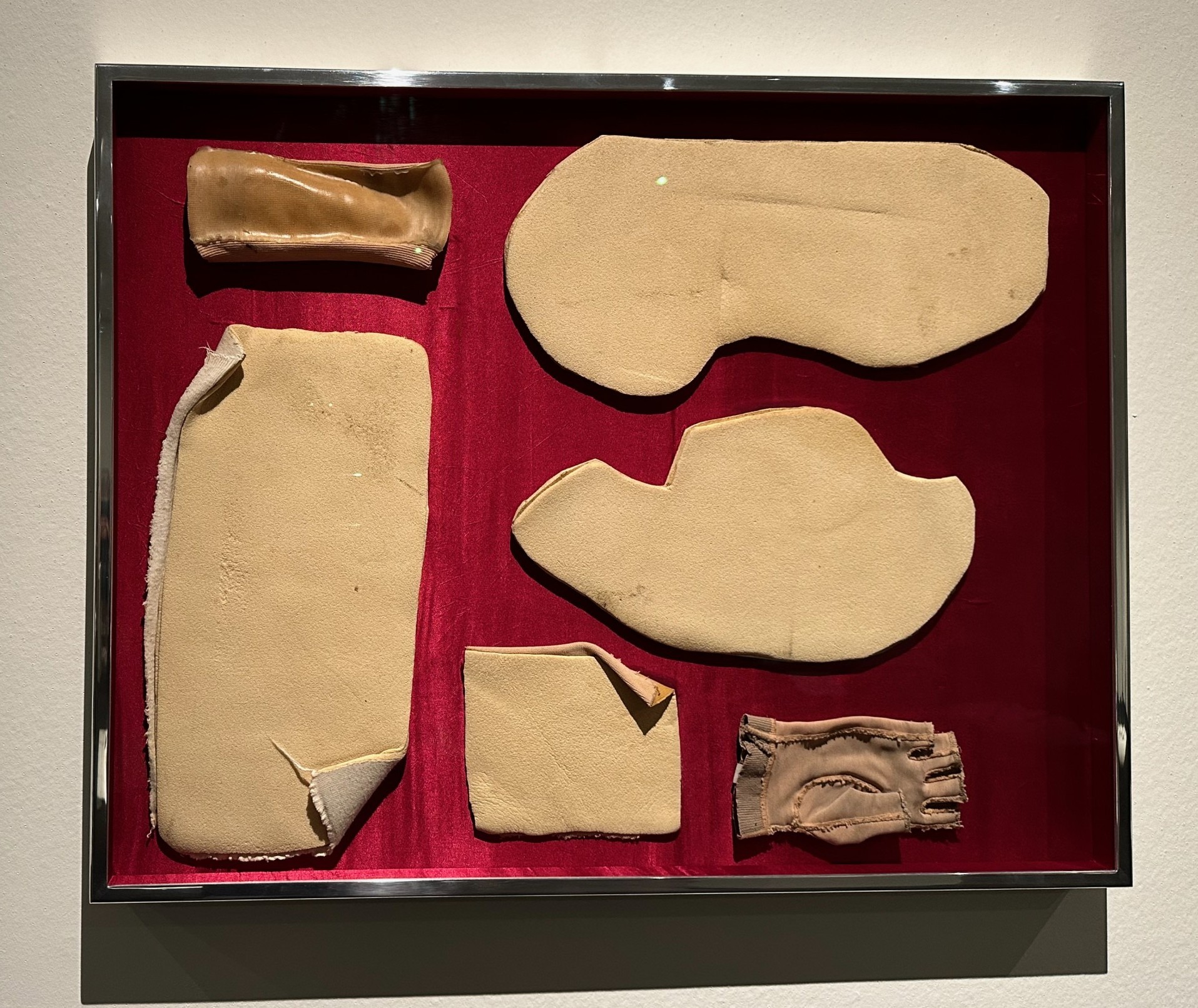
Several pieces reference the burns Bougatsos suffered in a 2001 performance when her costume caught fire. The Opera, a framed composition of bandages from her recovery process are abstract forms on a red velvet background that “hints at the interior of a jewelry case.”

The Opera was previously shown in her 2023 exhibition Idolized the Burn: An Ode to Performance, which writer Madeleine Seidel wrote about in Frieze magazine. “By using her personal injury archive as material in these works, Bougatsos asserts authority over her experience, transforming the stained, normally disposed-of skeins of medical-grade fabric into a document of her resilience.”
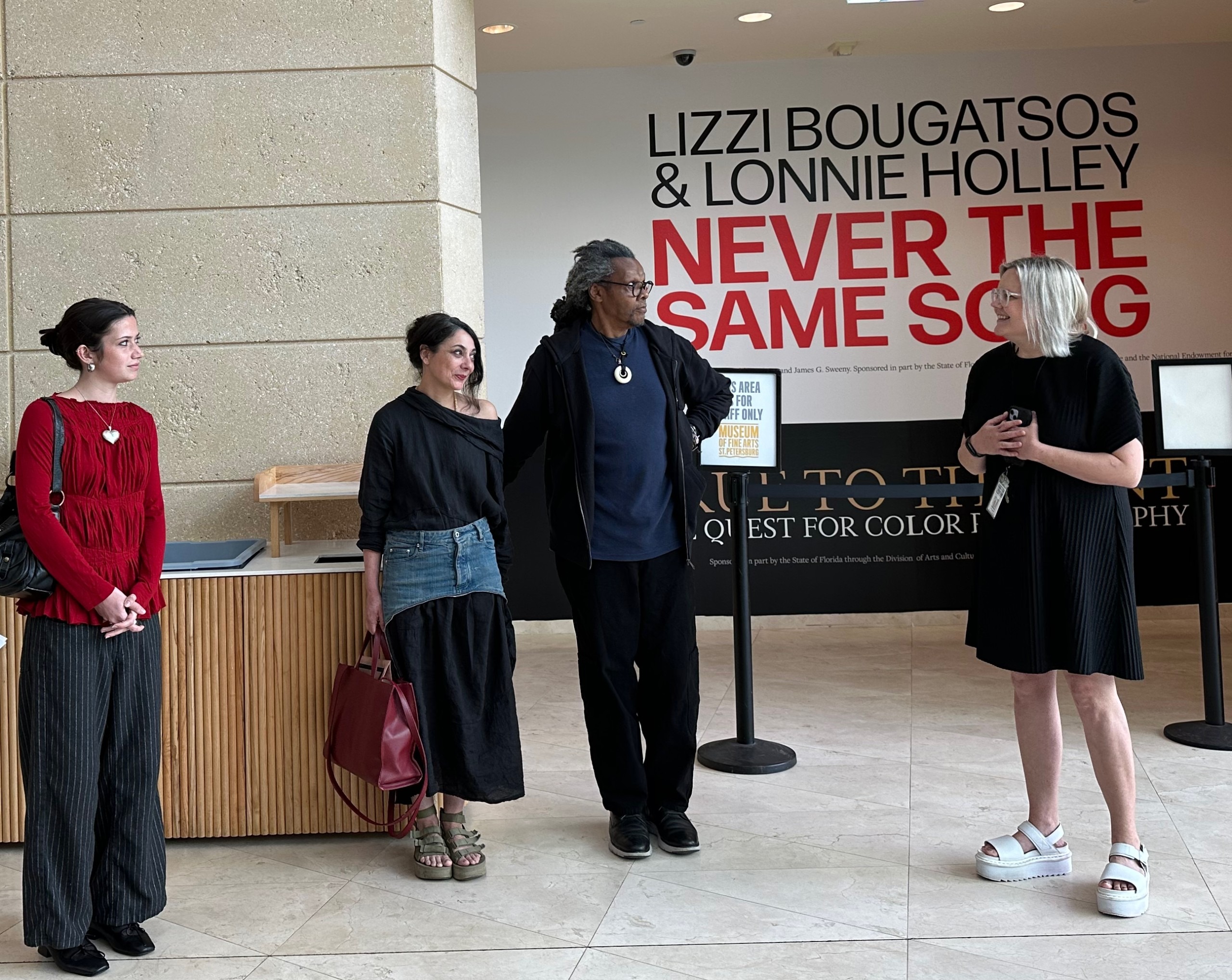
In a nutshell, this is an exhibition of two extremely different persons discussing humanity in personal and universal perspectives – in its beauty and ugliness, in the unexpected, in sometimes unwanted voices, in ungainly, and in poetic forms.
In all, revealing identities we might see in the mirror.
